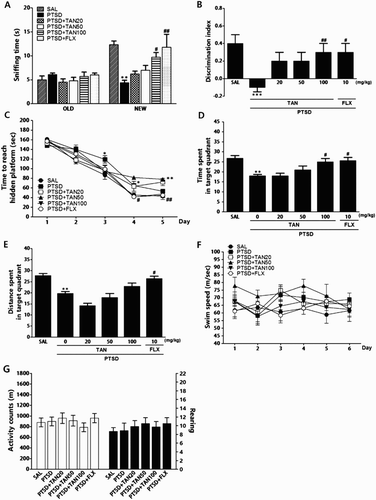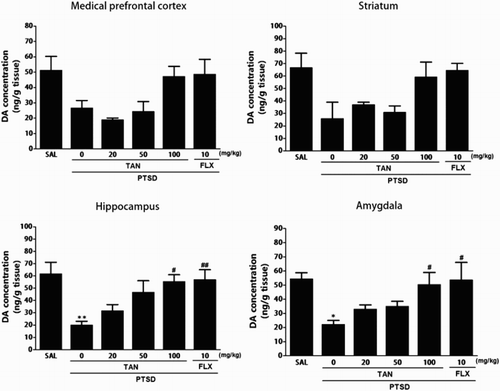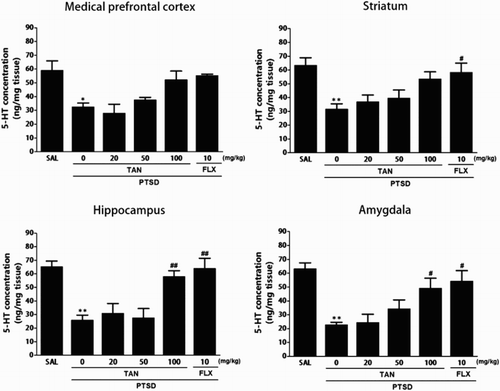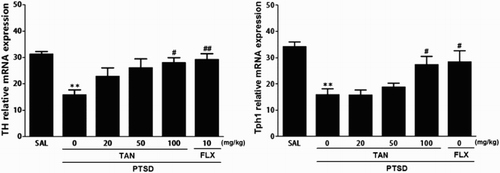Figures & data
Figure 1. The protocol used to create SPS-induced memory impairment, and that for TAN treatment. Each group of rats contained 6∼7 animals. OFT; open field test, ORT; object recognition task, MWM; Morris water maze test.

Figure 2. Effect of TAN on recognition memory was assessed using a novel ORT in which we measured the times taken to sniff familiar and novel objects during a 3-min choice trial (A) and the ability to discriminate between familiar and novel objects (B). The MWM test was used to assess the effect of TAN on spatial learning and memory; we measured the time taken to escape from water (latency) during acquisition trials using a submerged platform (C), the percentages of time spent in the target quadrant (D), the proportion of the total distance traversed in the target quadrant (E), and swimming speed (F). The OFT was used to assess the effect of TAN on locomotor activity (counts) and total number of rearings (G). *p < 0.05, **p < 0.01, ***p < 0.001 vs. the SAL group, #p < 0.05, ##p < 0.05 vs. the PTSD group.

Figure 3. Effect of TAN on DA concentration in the brains of rats exposed to SPS for 14 consecutive days. *p < 0.05, **p < 0.01 vs. the SAL group; #p < 0.05, ##p< 0.01 vs. the PTSD group.

Figure 4. Effect of TAN on 5-HT concentration in the brains of rats exposed to SPS for 14 consecutive days. *p < 0.05, **p < 0.01 vs. the SAL group; #p < 0.05,##p< 0.01 vs. the PTSD group.

Figure 5. Effect of TAN on expression of mRNA encoding TH and Tph1 in rats subjected to SPS-induced memory impairment. The expression levels were normalized to that of glyceraldehyde 3-phosphate dehydrogenase (GAPDH)(internal control). *p < 0.05 vs. the SAL group, #p < 0.05, ##p < 0.01 vs. the PTSD group.

